The Shaggy’s, aka Coprinus comatus, are an excellent edible mushroom that's easy to identify. Also known as the lawyer's wig mushroom or shaggy inkcap, and formerly known as Agaricus comatus, they're a common mushroom in yards and gardens.
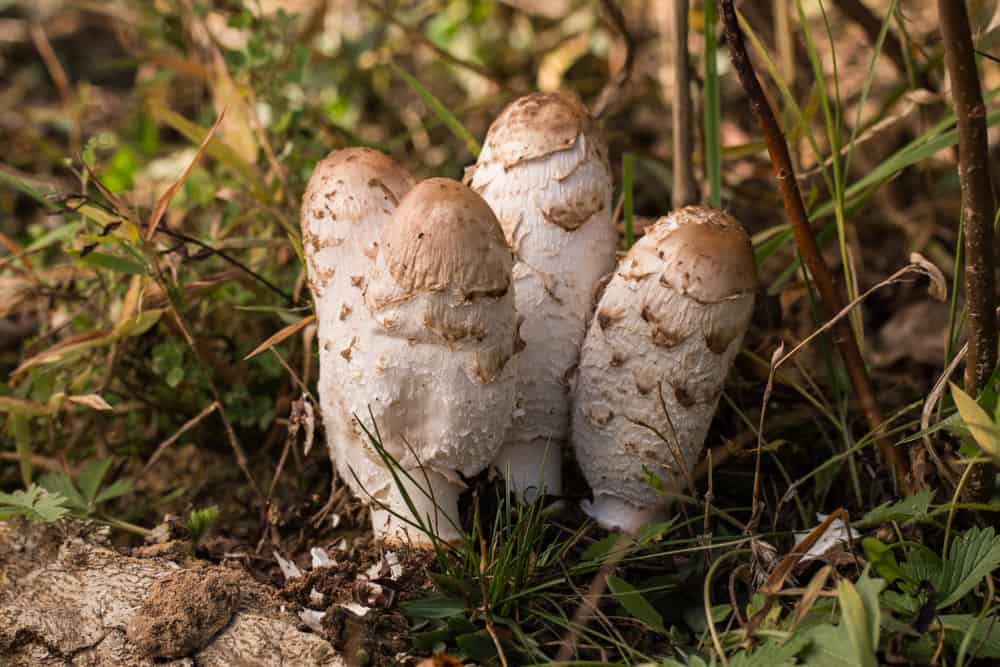
In this post, I'm going to give you a comprehensive guide to identifying, harvesting and cooking, with some of my favorite shaggy mane recipes at the end.
Shaggy mushrooms were one of the “fool proof four” that University of Minnesota professor Clyde Christiansen talked about in his 1943 book Common Edible Mushrooms (of North America) the others being chicken of the woods, giant puffballs, and morels.
I agree shaggy manes are pretty easy to pick out, but there are some small inky cap mushroom species around they can be easily confused with. The word “inky cap” is used to describe many species from the family coprinus and coprinopsis. All of those mushrooms are alike in that as they mature, they turn into black ink.
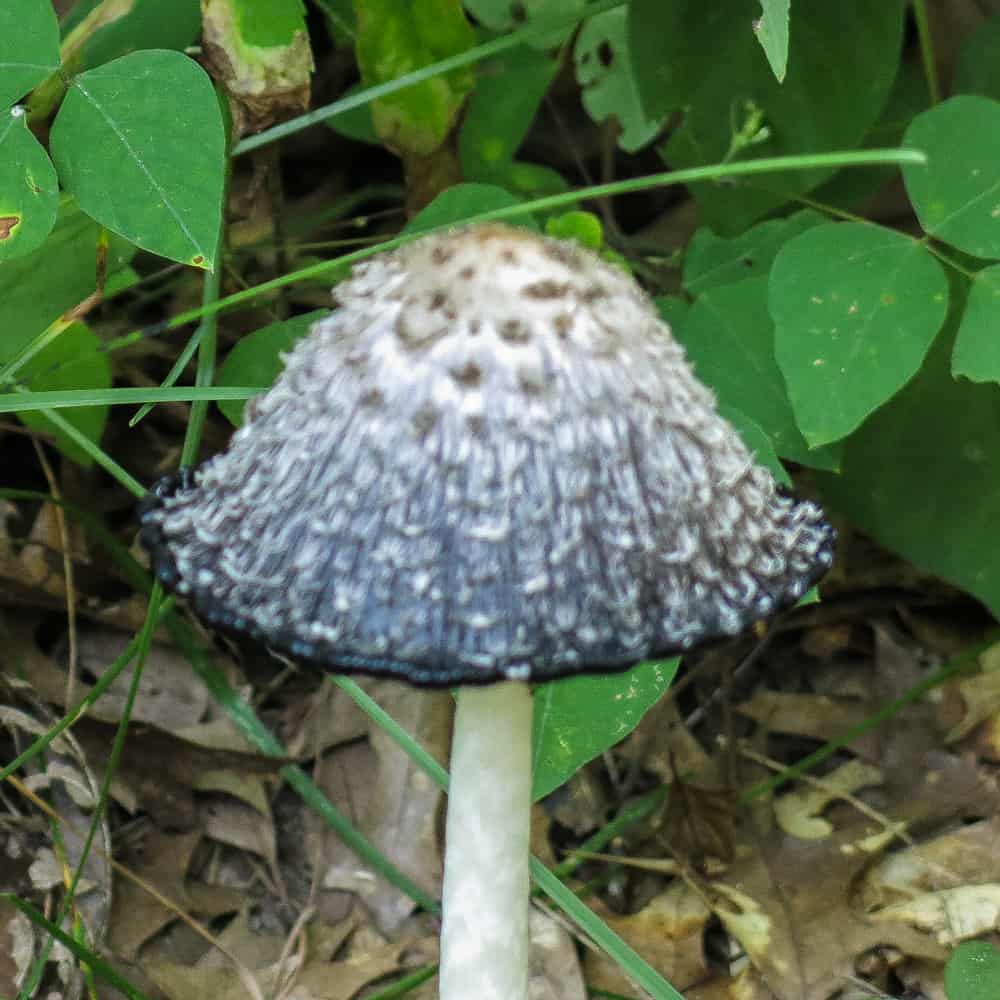
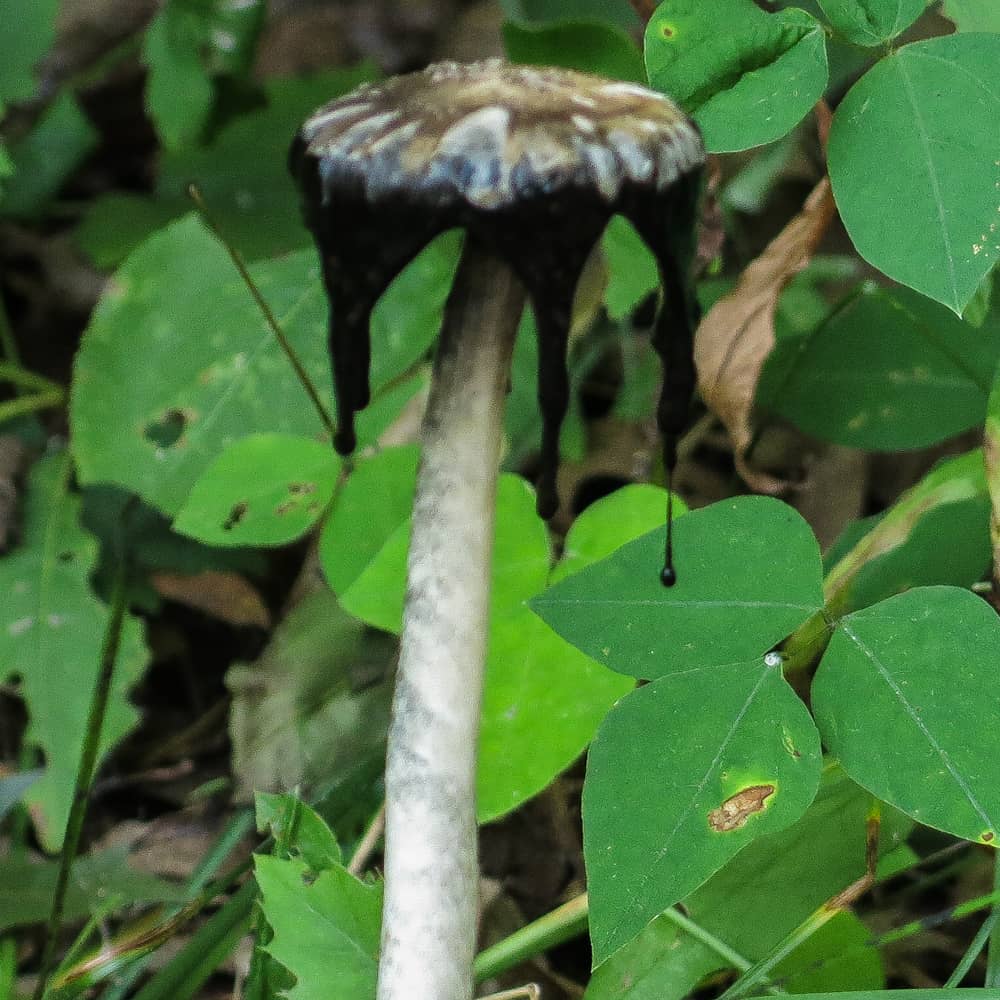
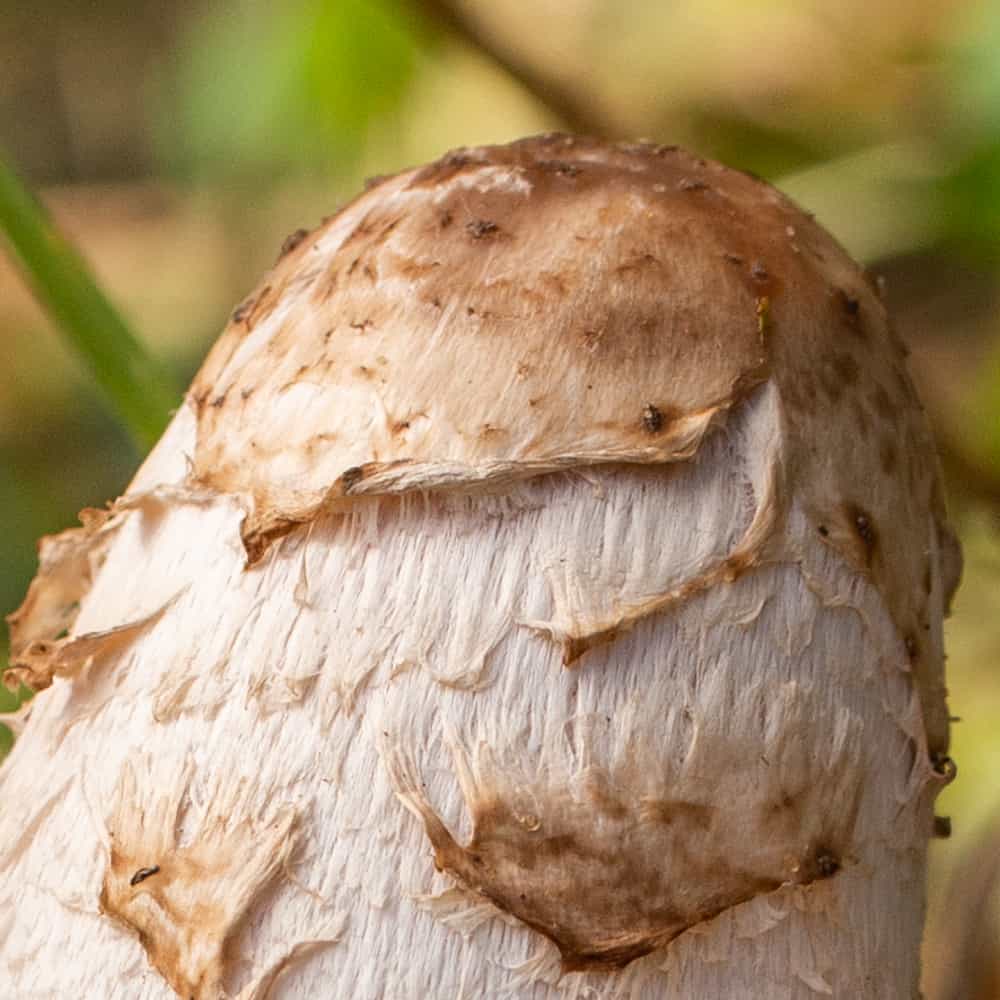

Here's some basic things to know that set shaggy manes apart from other inky caps:
Identification and Look-a-Likes
Alcohol inkys
The only inky caps or "poisonous mushrooms" to worry about comparing your shaggy manes to are Coprinopsis, specifically the alcohol inky, and its common inky cap cousins.
Unlike shaggy manes that may, under rare circumstances, (if at all) give someone an adverse reaction when consumed with alcohol, Coprinopsis / Coprinus atramentarius definitely will.

Quick ID tips and distinguishing features
- Shaggy manes have a black spore print
- True shaggy manes will usually be much taller and more rubust than other inky caps.
- Shaggy manes grow singularly, but occasionally in tightly packed groups too. Other inky caps often typically grow in dense clusters, like the stinky ones that appear on your boulevard.
- True shaggy manes have visible shaggy scales on the cap.
- Shaggy manes have a cylindrical cap, not pointed or triangular.
- You will never see shaggy mane mushrooms growing directly from wood.
- Compared to other inky caps, shaggy manes are shaggy looking: very, very shaggy looking, with their cap looking much more like a wig, (hence the name) with small, up-swept hairs.
From a safety standpoint, I don’t think these pose much danger to casual forest diners at all, but you should know that some inky caps have been known to cause a reaction when consumed with alcohol, which could be consumed days before or after the mushroom is ingested.
There have been reports of people having negative reactions with alcohol and shaggy manes too, but it’s never happened to me, and I doubt the validity, as it's easy to misidentify something and then claim it made you sick.
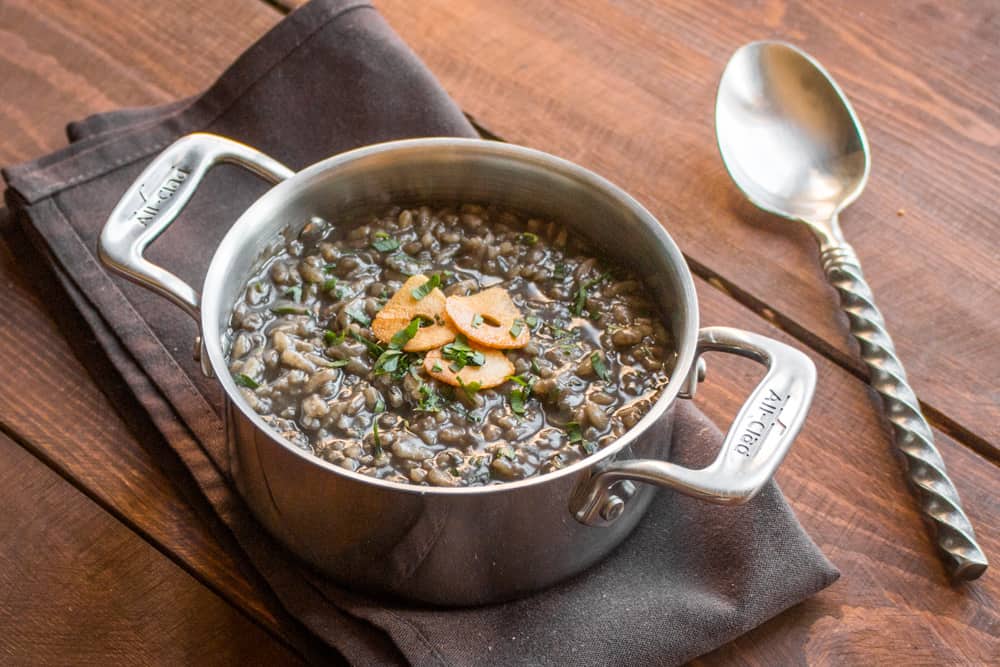
Hunting
In Minnesota, I see these occasionally in May, and sporadically through late summer until fall, when they fruit the heaviest. You don't have to go to the woods for these, and once you find a place where they grow, go back the next year for more, especially after a good rainfall. Here's a list of the places I check when I'm mushroom hunting:
- Along hard, packed trails
- The most common occurrence I see is in lawns, grassy areas and open woodlands or clearings
- Wood chips
- Disturbed areas, like piles of dirt
- I avoid parking lots, and areas near railroads as mushrooms can concentrate toxic heavy metals.
Hands down the best patch I’ve found is a couple piles of dirt (disturbed area) at my friend's log yard. There, I've picked them in large numbers: 50-60 or more at a time.
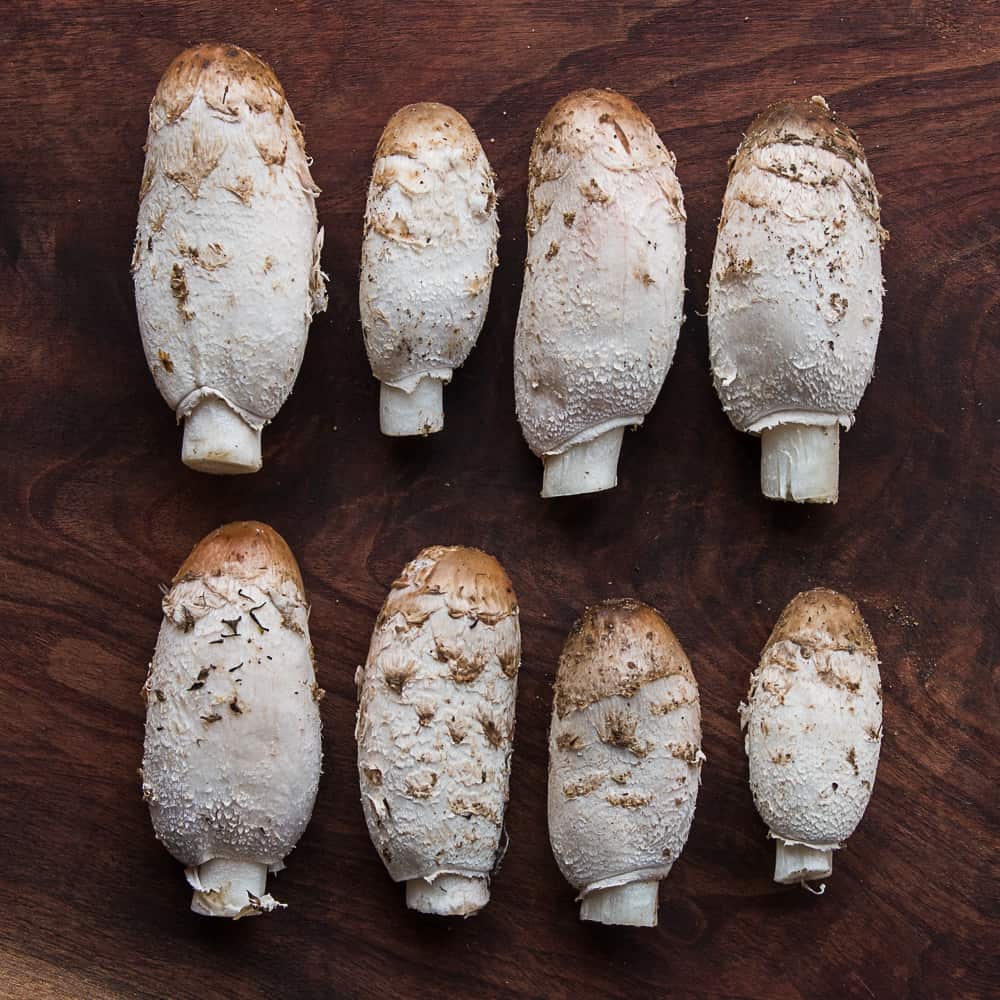
Can you drink alcohol with shaggy manes?
Yes. Shaggy manes don’t contain the compounds that react with alcohol, although it’s possible for individuals to have allergic reactions to mushrooms, even if they’ve had it before.
I know of anecdotal reports of people developing allergies to morels when consumed with alcohol, and some people develop allergies over time. But, I’ve never had a problem drinking alcohol with them, and I don’t know anyone who has experienced gastro-intestinal distress after eating these.
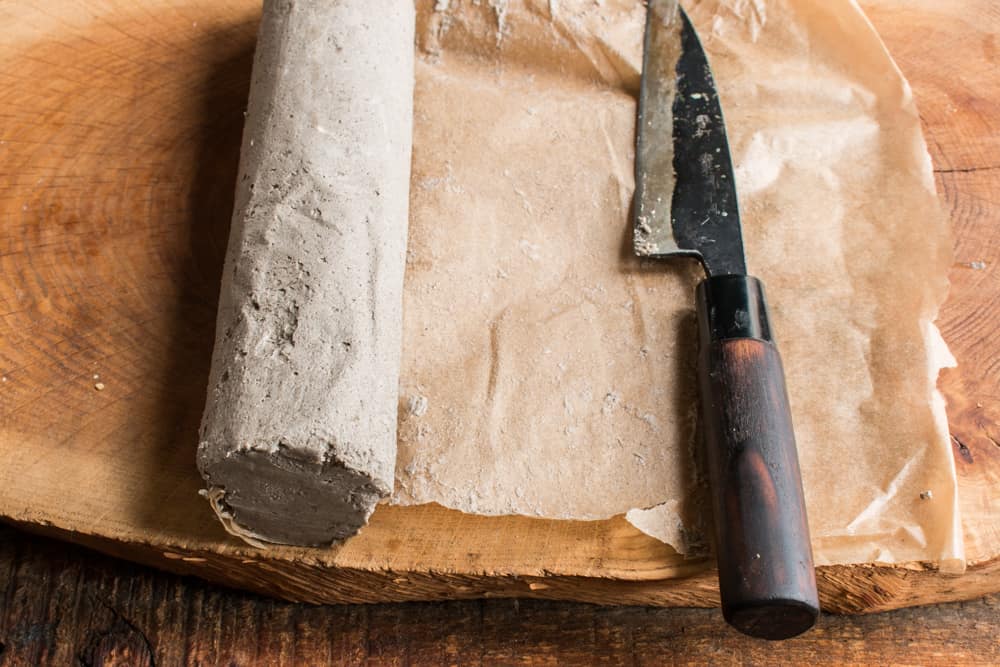
Cooking
These can be a difficult mushroom to work with in the kitchen. It’s not that they don’t taste good, they’re fantastic, and are kind of unreal when you see how large they can get; it’s like eating something out of a fairy tale.
The problem is that their shelf life is very short, and that they don’t take abuse rumbling around in a bag very well-they’re delicate.
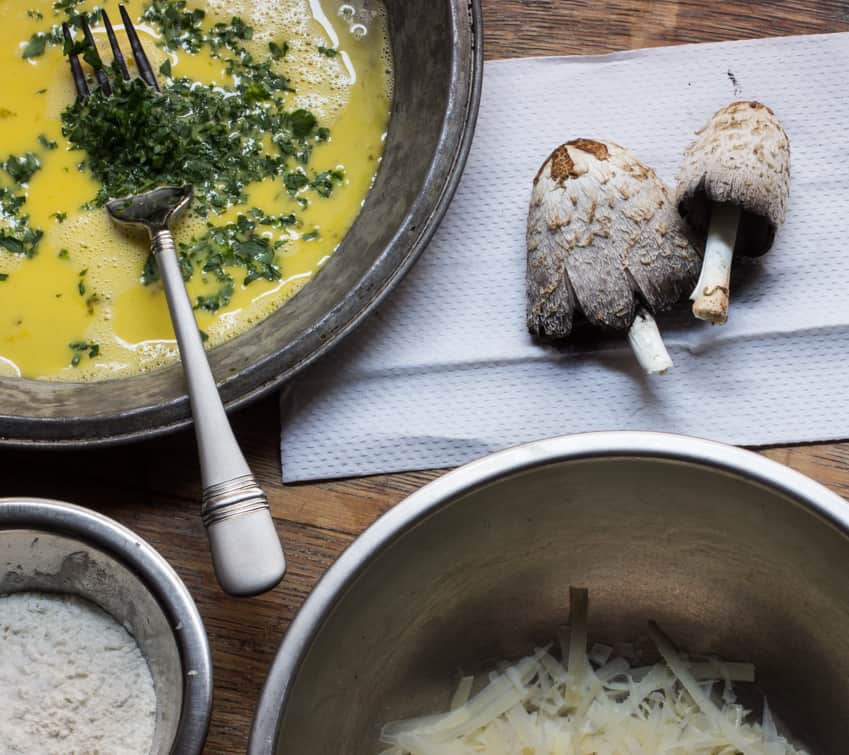
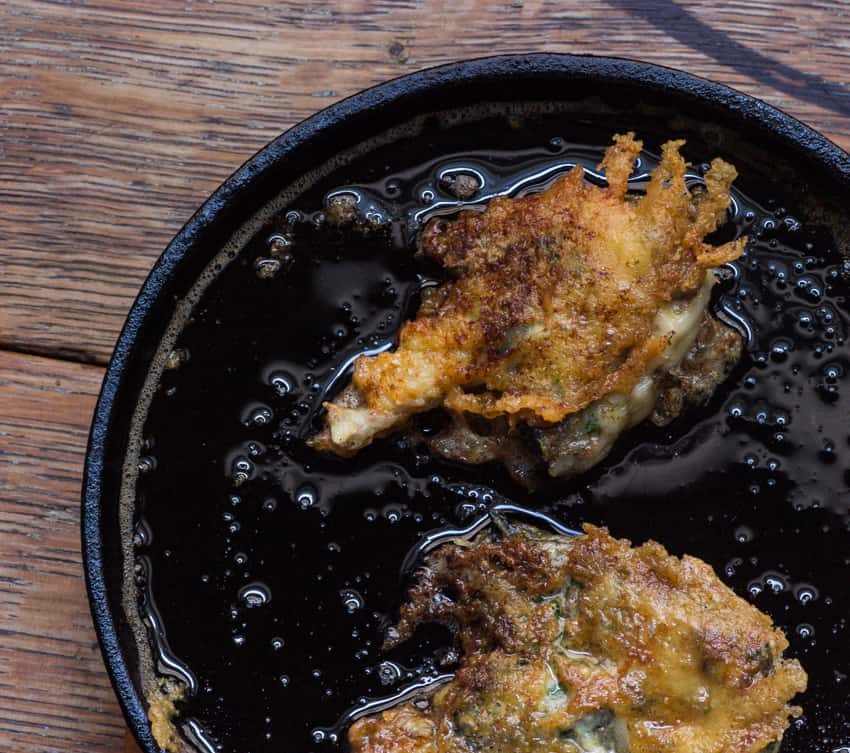
Jostled or bruised a couple times shaggy manes will start to get wet, soft, and dark in a matter of hours. Eventually the darkening (the technical term is deliquescing) will liquify the entire mushroom, starting with the cap, into an inky substance that coincidentally used to be substituted for ink, hence the name inky cap.
Since they used to make ink from the decomposing black goo, you can just imagine how it’ll stain things, including your hands.
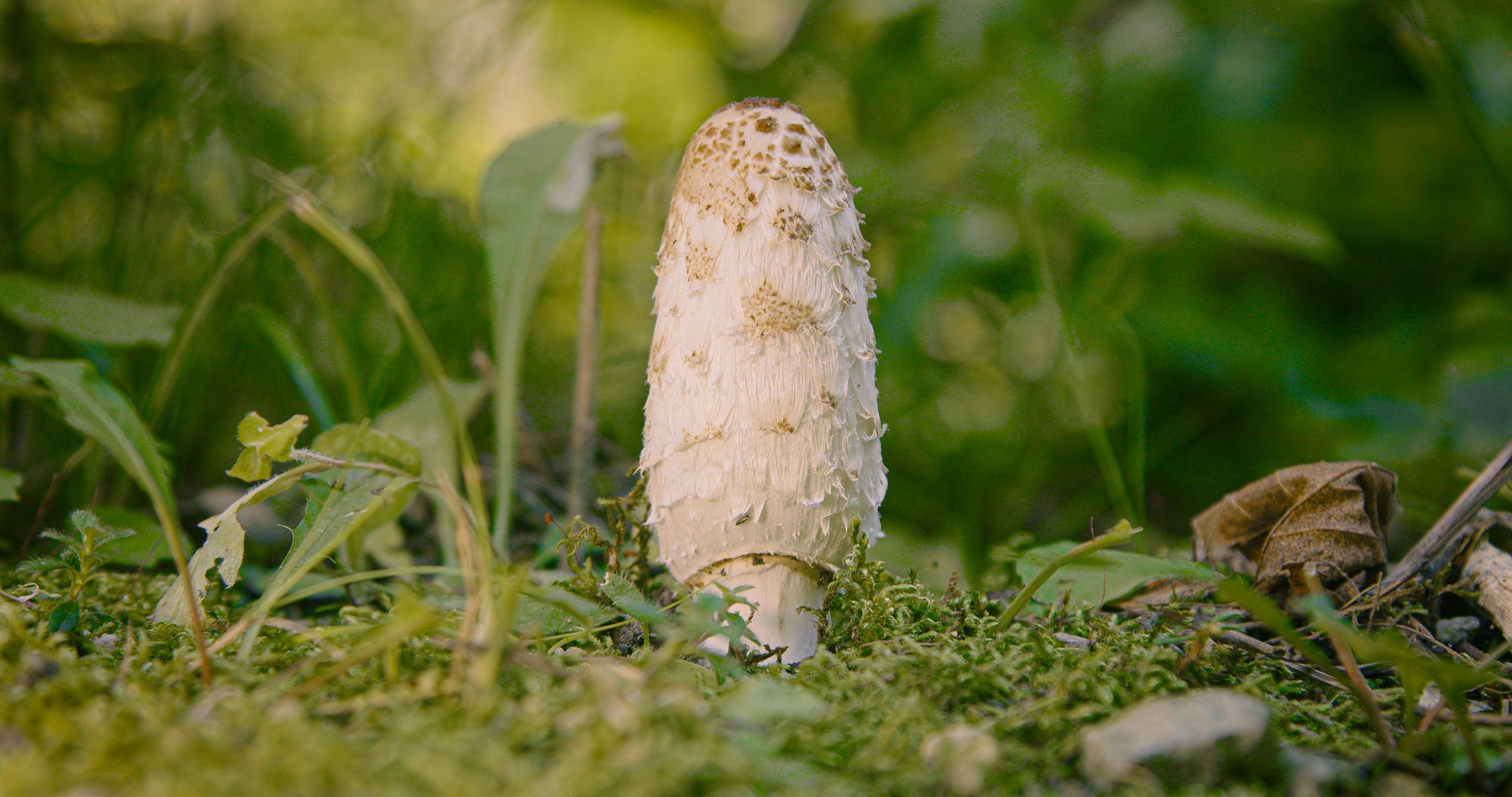
Something interesting happens when the mushroom begins it’s transformation into a puddle of black goo though, the flavor changes slightly, becoming intense and aromatic, something you could describe as being more “mushroomy”.
I read a great little book awhile back called Chanterelle dreams, amanita nightmares. Deep in the book there was a sentence or two where the author described making a black dough out of the mushroom goop shaggy manes turn into.
Can you eat shaggy manes after they start to turn black?
Yes, with precautions–they need to be thoroughly cooked as a killstep / safeguard, which is a bit of a moot point as thorough cooking is something I recommend with about 99.9 % of wild mushrooms.
As I understand it, the process of shaggy manes turning into inky, black liquid is an enzymatic process that helps the spores spread, which is different than decomposition by bacteria that could make you sick.
David Arora and my colleague Chad Hyatt have both mentioned and shared different ways the shaggy ink can be used, and, I can tell you from my experience too, that it’s a fascinating way to use these mushrooms if you happen on a large patch of them. There's a link to my guide on how to make shaggy mane ink at the bottom of this post.
Deliquescing to make culinary ink
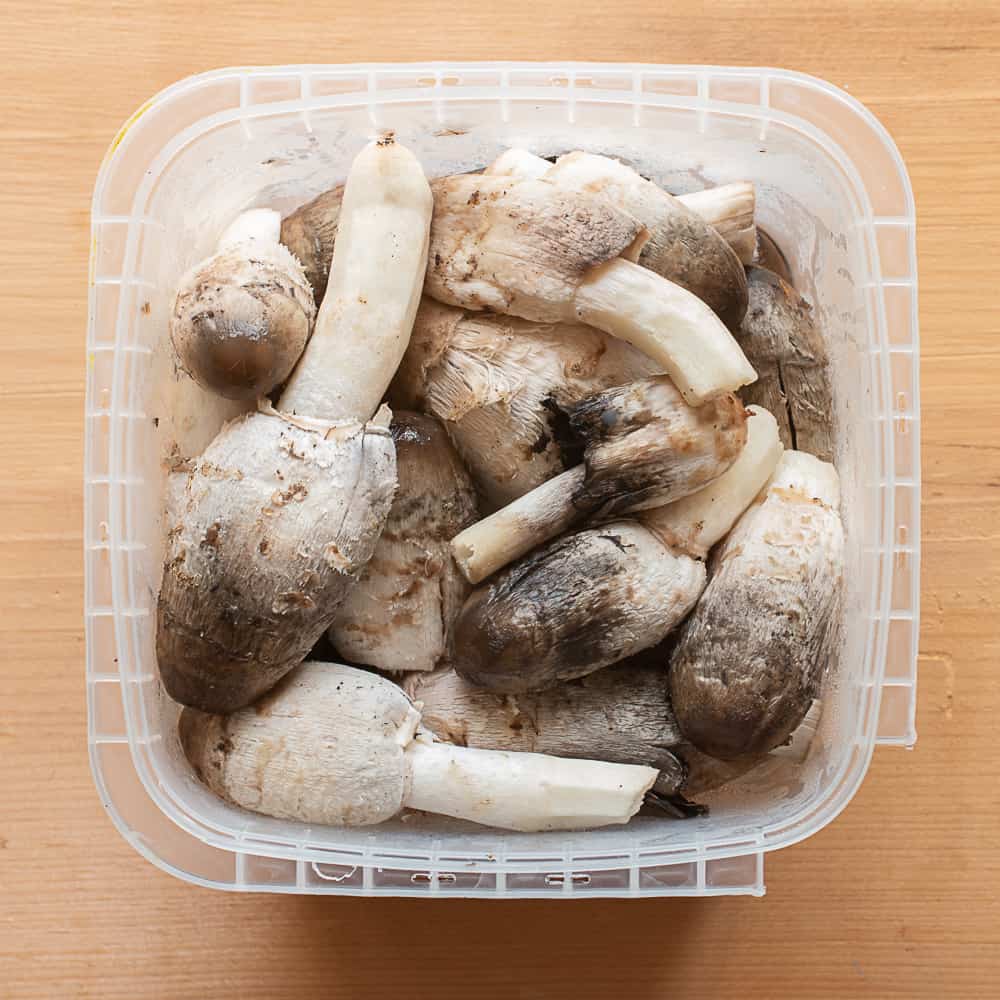
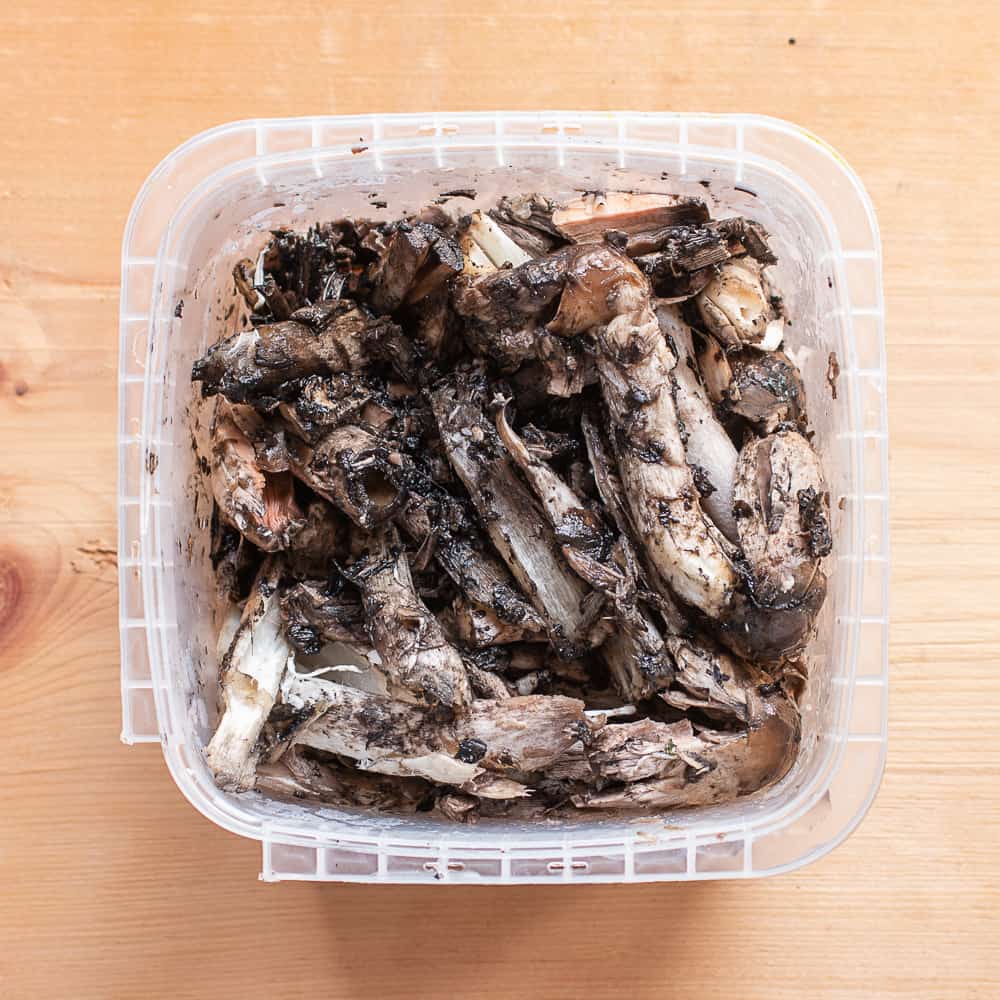
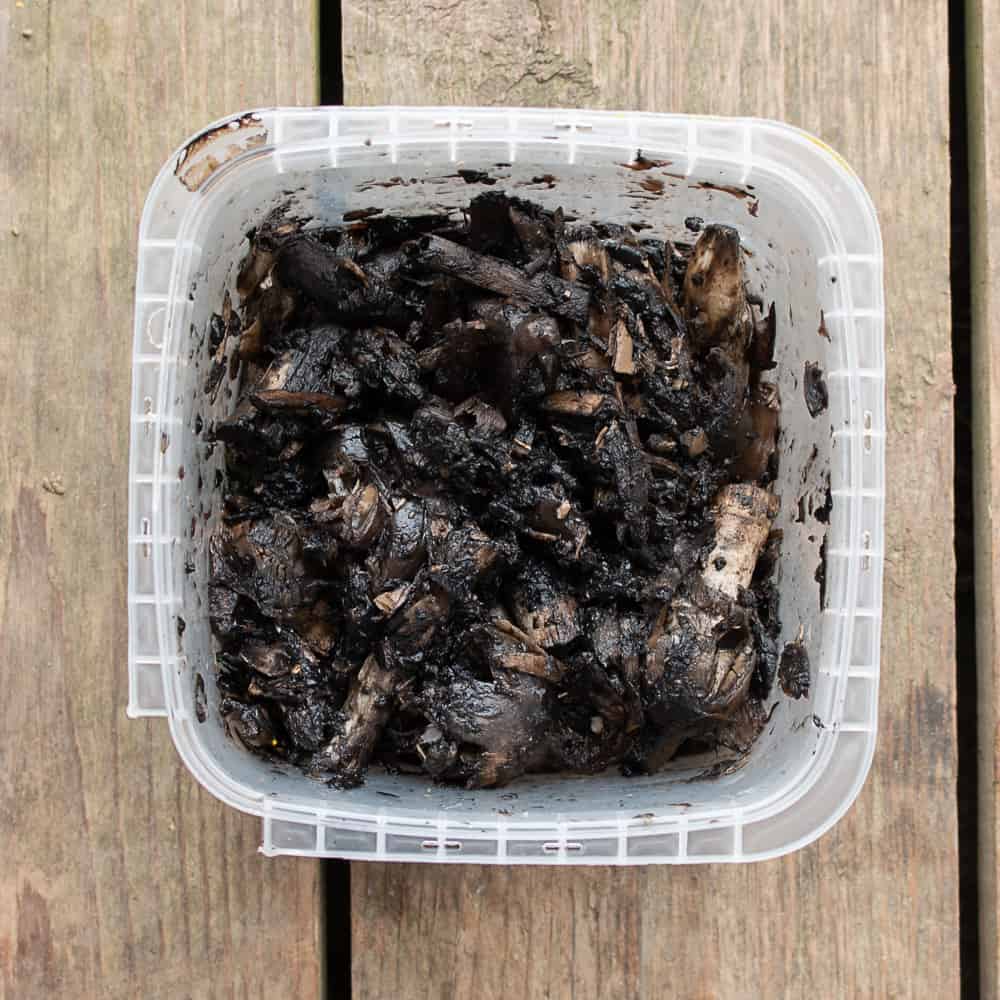
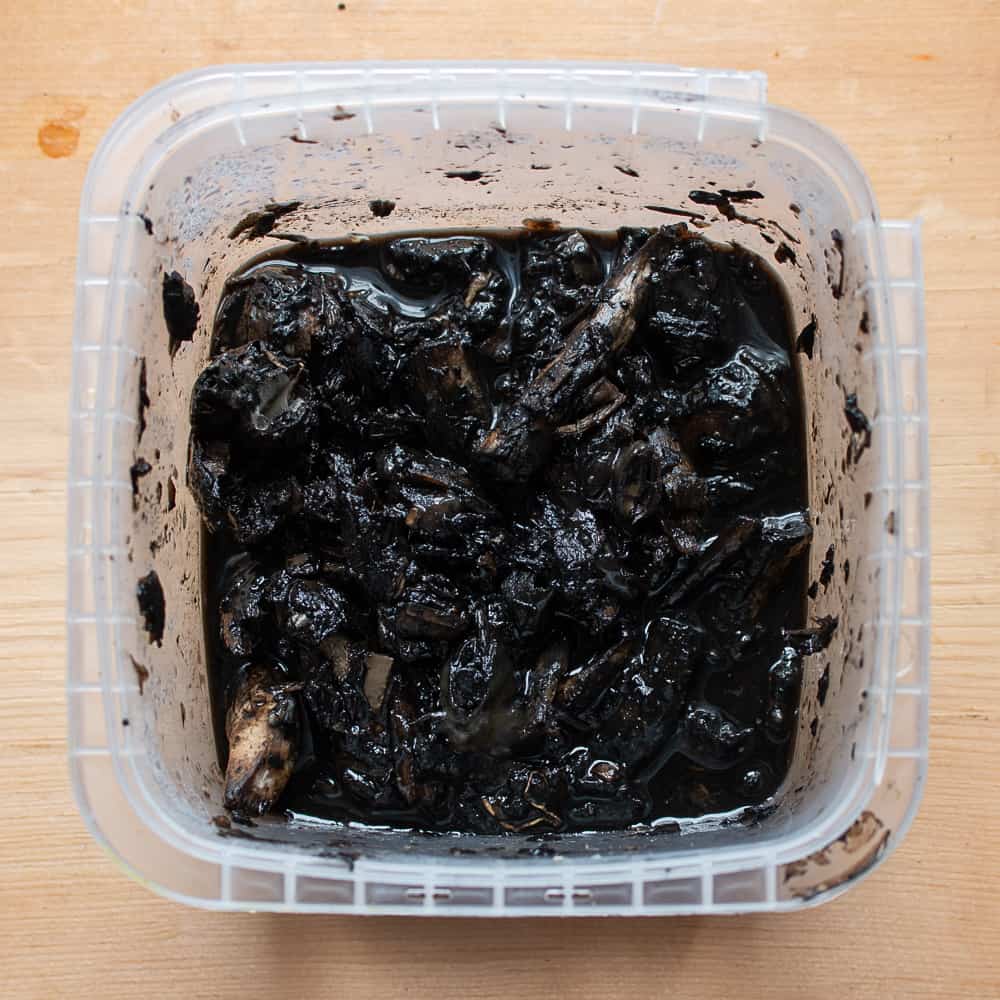
To me, taking deliquesced shaggy manes and making pasta dough is a great example of a resourceful use of a mushroom someone else might call garbage.
I’ve made the dough a couple times since I read the book, and it’s great, especially cooked in a mushroom broth. The only drawback is that it takes a decent number of shaggy manes to make a pound or so of pasta dough.
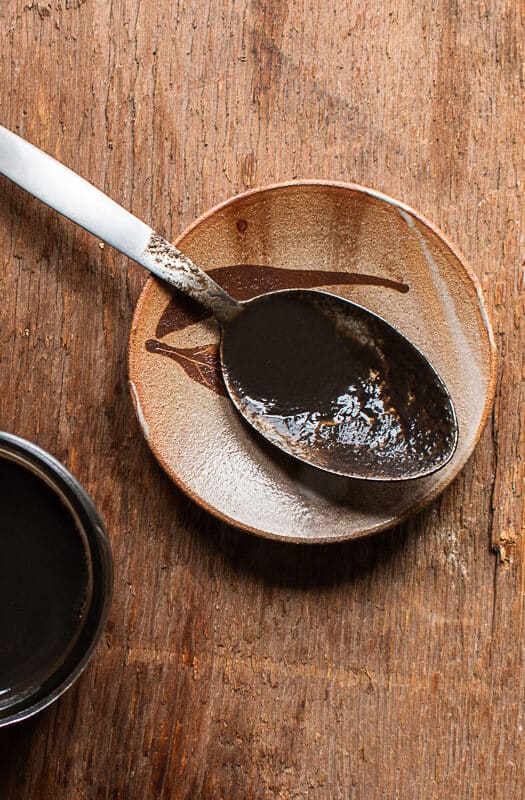
You could use other inky caps turned to goo, and I know people who use them in the kitchen, but I’d advise a little caution due to the alcohol allergy part-I haven’t tried it with them and I like beer, so you’re on your own for the time being with that.
Drying
Most people don't know this, but If you get young shaggy mane mushrooms, you can dehydrate them before they turn to ink. To dry them, clean the mushrooms or brush them, but don't expose them to water. Put the mushrooms, whole, into a dehydrator, and dry on high (145-150 F) overnight until the mushrooms are cracker-dry.
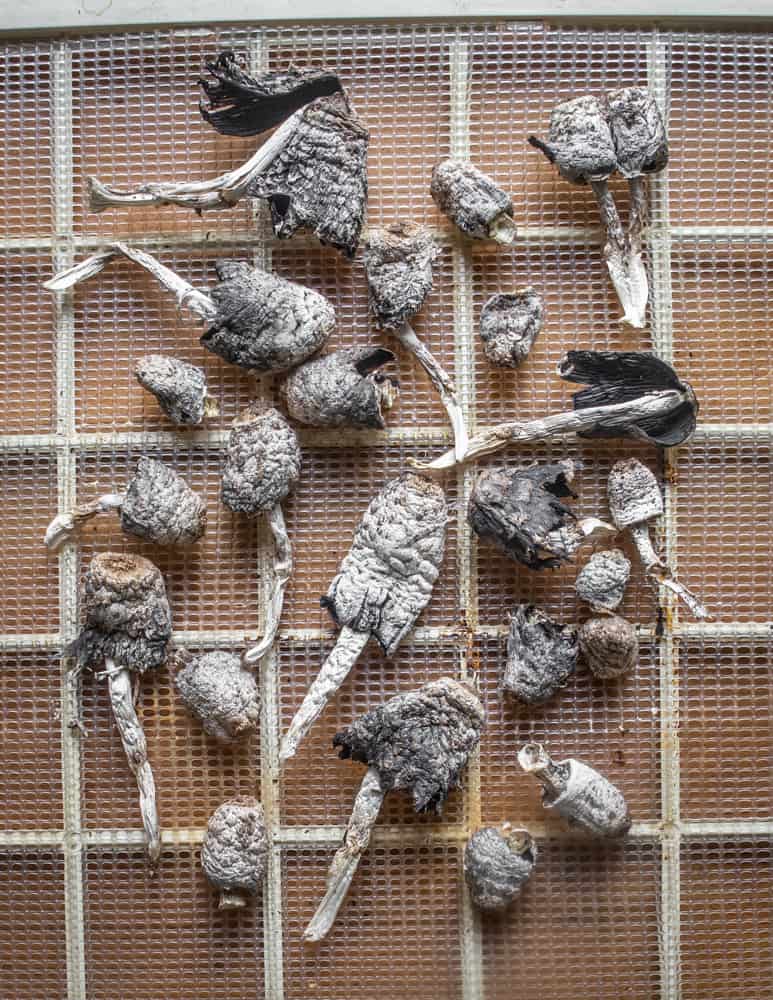
Stored in a jar, they'll last for years. Rehydrate the mushrooms by soaking in water, moving them around to dislodge dirt, then remove the mushrooms, strain the liquid, and add them to a soup or sauce.
Recipes
How to Make Shaggy Mane Mushroom Ink
Shaggy Mane Ink Compound Butter
Wild Mushrooms with Garlic and Parsley
Rabbit Chassuer with Mixed Wild Mushrooms
More
35 Essential Wild Mushrooms Every Forager Should Know
Further Reading
Coprinopsis atramentaria (Alcohol Inky)


Leon Korkin
I pick shaggies on the North Rim of Grand Canyon. They grow along dirt roads in the same places year after year. The only problem is they pick sand as they come out of the ground and need to be washed. Before they turn black shaggy part turns pink but is still as good as the white part. Some older ones can be saved by cutting black part off. I fry them with butter, salt and pepper after simply breaking them apart by hand. Have to be fried the same day. Best mushroom to fry in my experience...competing with saffron milk caps
Alan Bergo
Yeah they’re great, agree with you on the sand though and the short shelf life.
Sandra
Thanks for all your great information!
When making the compound butter from Shaggy Mane ink there’s no need to worry about thorough cooking? Can the butter be used without cooking?
Alan Bergo
Yes it can be used without cooking. The shaggy manes are cooked after the blackening process to sterilize them.
Kirby Milton
Shaggy Manes, made in heaven and dropped here on earth when the Lord was in an especially good mood. are unsurpassed. I put them in a casserole dish with a tight fitting cover along with some butter and a touch of salt and black pepper and cook at 340 degrees for 35 min. When slightly cooled down I add cream and milk and pour some over toast to eat. The balance I keep in the refridgerator and keep adding to it as long as the season lasts.
Alan Bergo
That sounds great.
Rexie
Most years in October these shaggy manes erupt just behind a line of trees next to the building where I work Definitely shaggy manes.. My first encounter with them here was strictly observational, meaning I noticed them, recognized them, and then turned back to the building. Within the hour I was hit with the same gastrointestinal distress that occurred in an earlier encounter with this variety when they were growing in the lawn outside a previous office location. So now when I see shaggy manes I basically get myself out of there..
Is this something particular to me? Or is there something more dangerous about their raw form? I'm just trying to figure this out. I love mushrooms, and it sure would be nice to try these meaty-looking beauties. Other co-workers have eaten them, but I dare not go near.
Alan Bergo
I'm not exactly clear what happened here. Are you saying that you think the mushrooms made you sick, but you didn't eat them?
Ralph Tangeman
Can you eat them once they turn black?
Alan Bergo
Kinda. See here. https://foragerchef.com/shaggy-mane-ink/
Ralph
Can you eat them once they turn black?
D-P Hubbell
Here in Quebec the definitive book is champigons du Quebec by denis Lebrun. Look at pp. 996-97 for excellent description and advice. There is also an excellent reprint of a 1890s cookbook called Home Made by Sandra Oddo which has great recipes. Please look them up. I learned mushrooms from old ladies in Germany while stationed there, unfortunately it was an oral tradition.
Shaggy Caps (Coprinus comatus Müll)
They grow outside most parish churches where the horses used to be parked for Mass. I have had my draft horses mowing the backyard for me and now it is full of shaggy caps. This year I just finished making Puff Ball (Meat)Loaf and now I will try your recipe for Shaggy Caps. Thank you very much.
Melissa Cohen
I tried blanching them to preserve them for a day or two. It kept them from turning black and inky but they were the texture of raw octopus. Cooking them up now in a soup. Still looking for a way to preserve because I get about 5-6 lbs a year. Luckily they grow in my. front yard, Omellettes are amazing, fried required some practice, and now attempting soup.
Claire
Can you use the ink to make pasta?
Alan Bergo
Yes of course.
Wendy S
I have had some great success with your Parm crusted recipe! I have done them with a seasoned flour dredge, egg wash and parm and panko. I baked them in a high oven on an oiled bake sheet. I have since froze them already cooked and they reheated great in a 325 degree oven! We have been getting them by the bucket full this year so needed to keep some of that rich goodness for later! I got a bit concerned about the shaggy mane vs inky caps ID but so far no adverse reactions! These guys are really shaggy but the tip of their caps tends to go a bit inky if they aren't dealt with right away! Thanks for your site! It has been very useful!
Wendy Sniderhan
Do you have any suggestions for storing "preserving" shaggy manes for later use? Drying, freezing? There are just so many right now and they are soooo rich we just can't keep up. even sharing with friends! I parm crusted them last night. Hoping the leftovers will reheat OK since they are crusty! They were delicious!!!
Alan Bergo
Cook them and puree, then freeze. Thanks.
Wendy Sniderhan
I am hoping if I parm crust cook them that I can defrost and reheat them in a hot skillet. I love them parm crusted - they are like mushroom steaks!!! Hoping this will work as we have a bumper year and would like to continue to enjoy them once they are done!
Laurie Cardwell
The shaggy mane is a lovely mushroom We find them on our property in groups, growing out of our packed gravel driveway. You must pick them as soon as you can before they start turning back around the edges, and take care not to bruise their delicate bodies.. The more back, the more the ammonia taste, I find. So far, knock on wood, I haven't had any reactions from drinking alcohol and eating the mushroom.
Alan Bergo
I love shaggies too, just wish they were more dependable in my spots.
Louise K
If the area is left I disturbed, they should reappear year after year in that area
Louise K
If the area is left I undisturbed, they should reappear year after year in that area
Steve Voss
I just had my first shaggy mane mushroom(s) this morning sautéed in brown butter. Delish!
Ate only one to see if any issues from beverages last night and possibly tonight. I will be looking for more of these to enjoy in the future! Thanks for your mushroom info.
Michelle
I just discovered these popping up in my yard in northern colorado following the monsoon. Picked right away, dropped in ice water, then sauteed. Yum!
Laurie
If you pick them when they just pop from the ground and fry them up with butter and onions, they are absolutely lovely.
Samantha
Great pictures! We are lucky enough to have these grow ALL OVER our driveway. It's fascinating to watch them pop up over the course of about 2 days and then immediately deliquesce. That's only when they are too abundant to eat of course...they are delicious. My favorite way to eat them is to carefully stuff them with a cream cheese-based filling and bake them. Yum. Can't wait for spring.
Margie
today we found a large patch of what look like shaggy manes. They are large - 6 inches - some of them. What's confusing is that you say they are usually found singly. We have picked the less mature ones & I'm going to batter them & fry. Hope no alcohol problems ensue. What do you think?
Alan Bergo
Hi Margie, the operative word here is "usually". Where I live, I typically see them singly, but they may also grow in clusters, although not as dense as other more widespread species of coprinus. I suspect you'll be just fine.
joolian
Hi, I am a self taught forager in Melbourne. Shaggy inkcaps were the first fungi I positively identified (I have now been doing this for 10 years). Have you ever tried Hedgehog mushrooms (Hydnum Umbilicatum or Hydnum Repandum)? They are really special and are great for beginners especially coz there are no deadly lookalikes.
Btw, I love the photography on your website. Recipes are great too, thanks for sharing your passion.
Alan Bergo
Hi Joolian. I love hedgehog mushrooms, one of my favorite summer species here in the U.S.
Dan Farmer
Shaggies are one fungus that I have yet to eat. The antabuse qualities of the related alcohol inky always transferred over in the back of my mind, for one thing, although I know know that the shaggy mane rarely, if ever, causes a reaction. Still, that thought is with me and makes it unappealing. Likewise the deliquesing bit is a turn-off to me. I had an artist/cartoonist friend in college that used to draw his cartoons using ink that he made from shaggy manes, and it stunk strongly of ammonia.
But one of these days, I will overcome my hesitations and give them a try. I almost did one day this spring... to the point of bringing some home with me. But they ended up in the compost heap.
Alan Bergo
Hey Dan! Interesting about the ammonia part, maybe it gains an off smell after extended time in goop stage? Idk.
Jill Moles
Could the ones used for the ink have been another inedible inky cap? I picked the one that "grows in dense clusters in my boulevard directly on wood" and it stunk awfully, though I would describe it as closer to moth balls. Needless to say I didn't eat it
Sara
Some types of agaricus are known for the mothballs smell.. you may have found a patch of those.
Lois
Thank you for posting on the Shaggy Mane! I have just yesterday found a bunch on the edge of my horse pasture, picked and sautéed them in olive oil just to get a taste but was not positive so kept it to just a taste! Turned out not bad, with no seasoning as I wanted to just taste the mushroom. I was not too sure when the liquid turned so black!
Alan Bergo
Hey no prob, glad you liked the post! I was unsure of these for a while too, and while this website isn't designed to be a scientific guide, there are some good points in here. Mainly that they are typically much larger than other inkys, and that they usually grow singularly, where the others often grow in dense clusters. They are a great eater!
Yvette
I think I found a few in my yard. You might be best to tell me whether these are indeed true inky caps or not. They've already started to drip and turn black. And they're either stand alone or in a group of no more than five. But, they look the exact same as your photos.
If they are, I would love to harvest them for a taste next year!